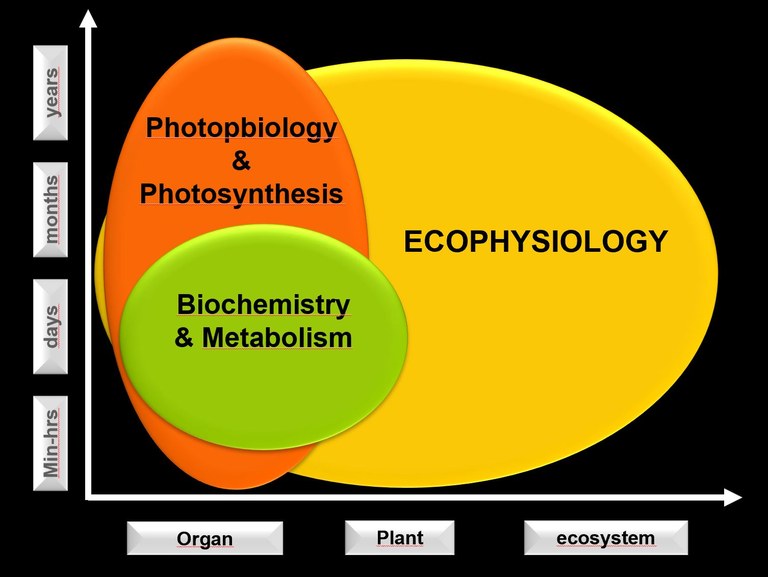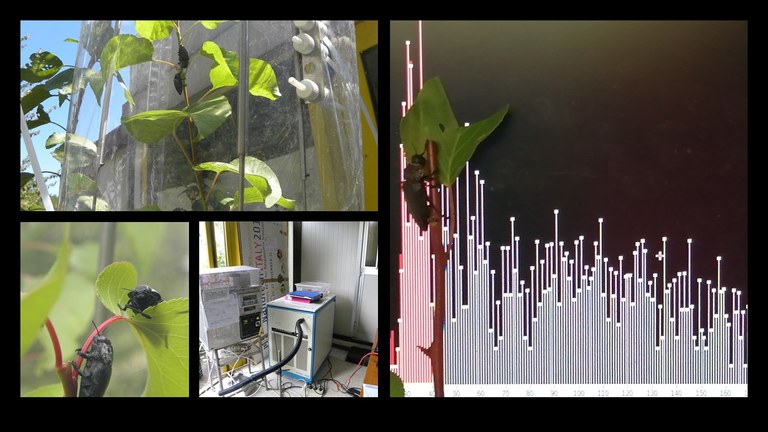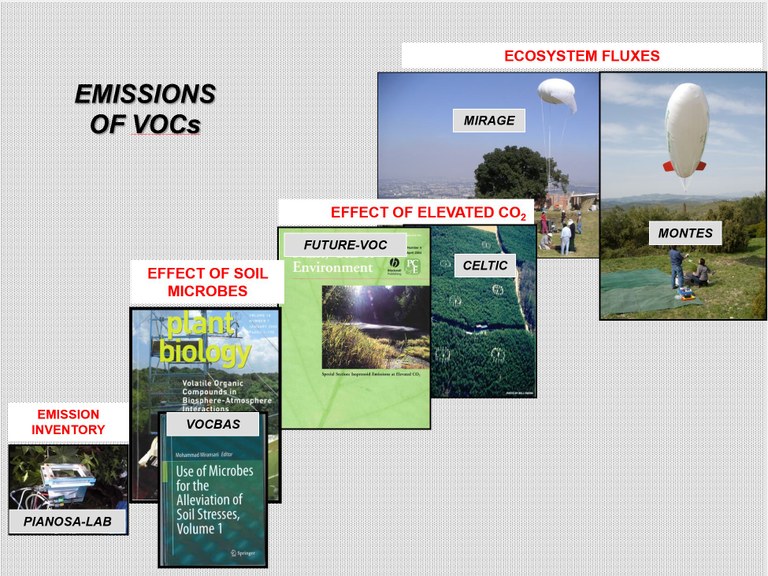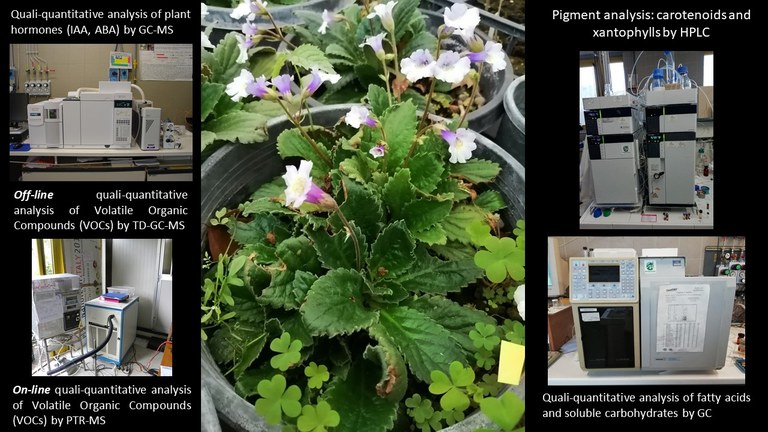curriculum vitae english
Senior Scientist at National Research Council (CNR), Institute of BioEconomy (IBE), Bologna, Italy.
ORCID: https://orcid.org/0000-0002-4783-0429
ResearcherID: http://www.researcherid.com/rid/N-7763-2015
LOOP: https://loop.frontiersin.org/people/533323/overview
Scopus H-index=20.
Education and training
- 2010-Qualification as CNR senior researcher
- 2002-Qualification as CNR researcher
- 1993-1996- PhD level formation in Plant Ecophysiology at the Italian National Research Council (CNR)
- 1993- Laurea cum laude in Biological Sciences, University of Bologna
Professional Appointments and Current Position
- 2010-present: Bologna, Italy; Senior Researcher at IBE-CNR, Bologna.
- 2006: Bologna, Italy; Full-time Researcher at IBIMET-CNR (now IBE), Bologna.
- 2006: Barcelona, Catalogna; Visiting scientist at the Centre de Recerca Ecològica i Aplicacions Forestals (CREAF), Universitat Autònoma de Barcelona (ESF-VOCBAS grant)
- 2004: Mexico City, Mexico; Visiting scientist during NCAR-US field campaign (CNR grant).
- 2003: North Carolina, US; Visiting scientist during NCAR-US field campaign (CNR grant).
- 2002-2006: Bologna, Italy; Researcher at IBIMET-CNR (now IBE), Bologna.
- 1997: Beltsville, MD, US; Visiting scientist at USDA, Horticultural Crops Quality Laboratory and at the Climate Stress Laboratory, Agricultural Research Centre.
- 1993-2002: Bologna, Italy; fellowships at IBIMET-CNR (now IBE).
Interests and Present Fields of Work


PLANT PHYSIOLOGY
- Plant species: trees (e.g. fruit-trees, Populus), herbaceous crops (e.g. tomato, quinoa), resurrection plants (Haberlea rhodopensis), Mediterranean plant species.
- Plant responses to individual or co-occurring multiple factors:
Abiotic Stresses: drought, heavy metals, extreme temperatures, light, salinity
Biotic Stresses: pathogens and herbivores
Beneficial Soil Microbes: Arbuscular Mycorrhiza (AM)
- Biochemical and Physiological analysis of Primary and Secondary Metabolism
-
Plant hormones (e.g. auxins, IAA; abscisic acid, ABA), carbohydrates, fatty acids, isoprenoids (terpenoids, carotenoids, including xanthophylls, carotenes).
-
Biogenic Volatile Organic Compounds (BVOCs).
- Gas-exchanges of CO2 and H2O, and chlorophyll fluorescence.
- Comprehensive Research Questions:
- What effective protective mechanisms, at biochemical and physiological level, are the most likely enabling plant tolerance and cross-tolerance to different abiotic stresses?
- How do stress factors change the partitioning of carbon allocated to growth and defense?
- How is light energy partitioned into photochemistry and photoprotective pathways?
- How does carbon allocation to protective metabolites (BVOCs, ABA, carotenoids), relate to the energy management?
- Does plant VOCs emission and its potential cross-talk with other functional metabolites play a role in AM-mediated plant tolerance to abiotic stress?
- How do abiotic stresses influence BVOCs-mediated plant-insect herbivore relationship?
PLANT ECOPHYSIOLOGY
- Biosphere-atmosphere exchanges of Biogenic VOCs at ecosystem level: research on the physiological, ecological and environmental controlling factors of plant BVOCs emissions; on the interactions between climate change variables and BVOCs emission; on relationships between BVOCs and environmental pollution.
- Methodological approach: leaf and branch enclosure systems under controlled or natural conditions, micrometeorological flux measurements based on tethered balloon platform combined to off-line GC-MS analyses and to real-time PTR-MS chemical analysis.
- Comprehensive Research Questions:
- What controls atmospheric concentrations of BVOCS?
- How do biological systems interact chemically and physically with atmosphere?
- How do BVOCs emissions contribute to atmospheric chemistry and air quality in natural, agricultural and urban ecosystems?
SCIENCE COMMUNICATION AND EDUCATION
Through the application and development of new approaches and tools based on hands-on approaches, active participatory, experimental learning, and creative problem solving methods, I aim to 1) increase the level of knowledge and awareness of young students on the vital role of plants, 2) show how todays’ scientists are working on plant science-related societal and environmental challenges, and 3) increase the scientific interest in scientific methods and approaches in young generations and instill at an early level the scientific attitudes to a critical evaluation of the problems.
OVERVIEW OF EXPERIENCE


Throughout my scientific career, I have been interested in direct and indirect plant responses to abiotic and biotic factors. In particular, the identification and profiling of the active metabolites mediating some of these interactions and the trade-off among the different metabolic pathways are fascinating issues to better understand how plants optimize the allocation of their resources to growth and defence. I have specific experience on plant physiology and ecophysiology on:
1) Development of analytical techniques to investigate plant primary and secondary metabolism
2) Investigation of plant stress factors in relation to global change
3) Volatile Organic Compounds (VOCs) emission from plants.
The effects of environmental factors on biogenic VOC emissions has been an important part of my research throughout my career. I started to study the VOC emission capacity of agricultural and native Mediterranean plant species, in controlled and field conditions (Emission inventories of BVOCs). Then I studied the response of VOCs emission in tree species to high CO2 levels in natural (CO2 spring) or artificially CO2-enriched environments (FACE system) and how this physiological process relates to tree growth and photosynthesis (Climate changes influences on BVOC emissions). In another interesting project, I investigated the effect of AM symbiotic root fungi on VOC emission from different plant species, also under abiotic stress conditions (Soil Microbes influences on plant BVOCs emission). Based on my experience on the leaf-level studies of VOCs emissions, I decided to extend my studies to the study of VOC emissions at the canopy and landscape level, focusing in particular on terrestrial ecosystems of the Mediterranean Basin (Atmospheric distribution of BVOCs). I have been conducting measurements of VOC fluxes applying mass balance and tracer ratio methods combined with tethered-balloon sampling platforms (Micrometeorological flux techniques; Modelling of BVOCs). My research advanced the science of understanding how urban forest and green infrastructure mitigate pollutants and act as sinks for CO2 in order to evaluate ecosystem services provided by urban vegetation.
Recently I’m interested in the role played by plant VOCs as infochemical cues in host-finding by pest insects. In particular, I’m investigating the BVOC-mediated relationship between the beetle Capnodis tenebrionsis L., and some Prunus species (e.g. apricot, peach and nectarine trees), which are severely infested by this pest, especially in arid and semi-arid areas from Mediterranean to Continental climate (BVOCs in plant-insect herbivores interaction and in a changing environment). This study aims to develop biological strategies of pest control (e.g. use of volatiles, plant breeding for improved resistance).
Since the beginning of my professional life, the beneficial role of Arbuscular Mycorrhiza (AM) symbiosis in stress alleviation have been amongst my major research interests. I mainly focus on the physiological significance and role of different metabolites (e.g. ABA, VOCs, and carotenoids) and their potential cross-talk, in the AM-mediated alleviation of stress conditions in different plant species (BVOCs in plant-soil microbes interaction).
I have extensive experience on aromatic VOC profiles of food (e.g. pear, apple, peach) and fruit products (e.g. olive oil, essential oils) as key elements for defining the distinct flavours of food and as a link to the nutritional value associated with the perceived foods.
Based on this experience, I decided to extend my studies to resurrection plants, which display vegetative desiccation tolerance. In 2010 I started a collaboration with Prof Katya Georgieva of Plant Physiology and Genetics Institute of Bulgarian Academy of Science. Within two different Bilateral projects, she involved me in the field of resurrection plants. I conducted experiments aimed at better understanding the mechanisms of desiccation tolerance in resurrection plants, and in particular investigating the role of plant hormones, carbohydrates, and xanthophylls cycle pigments. I see my current work on vegetative desiccation tolerance as a highlight in my professional life.
Recent National and International Projects
International grants:
2018: FosterERM@schools: Fostering Entrepreneurship in Raw Materials using Serious Game Concepts; funded by EIT Raw Material-KIC. Co-Investigator.
2017: Green Innovation@schools (Cross-KIC collaboration towards a European Human Capital perspective); funded by EIT Climate-KIC. Task leader.
2016-2018: Bilateral project CNR (Italy)-BAS (Bulgaria) Biochemical and Physiological mechanisms of cold hardiness in resurrection plant species Haberlea rhodopensis Friv. Principal Investigator.
2010: CONSOLIDER INGENIO MONTES CSD2008-00040 project “Spanish woodlands and global change: threats and opportunities” funded by the Ministery of Science of the Spanish Government. Team leader.
2010-2012: Bilateral project CNR (Italy)-BAS (Bulgaria) Study on the mechanism of desiccation tolerance of the resurrection plant Haberlea rhodopensis under high temperature and high irradiance conditions. Principal Investigator.
National grants:
2014: Ecophysiological and micro-morphological characterization of different plant species for environmental mitigation of pollutants. Scientific agreement between European Nursery Consortium (Consorzio Vivaisti Europei; CVE) and IBIMET-CNR, Bologna. Co-Investigator.
2012-2013: Emission of volatile organic compounds from biomass used for energetics transformation. Scientific agreement between IBIMET-CNR, Bologna section, and Department of Agricultural and Food Science (DiSTAL), Bologna University, within the national project “BIOSEA – Study of agronomic and environmental aspects to optimize the sustainability of existing bioenergy supply Funded by the Ministry of Agricultural, Food and Forestry Policies (MiPAAF). Co-Investigator.
2010: Ecophysiological and micro-morphological characterization of different plant species for environmental mitigation of pollutants. Scientific agreement between European Nursery Consortium (Consorzio Vivaisti Europei; CVE) and IBIMET-CNR, Bologna. Co-Investigator.
Fields Campaigns
July 2015: QuASAR (air quality, environmental and reseach studies) field campaign, within the AriaSaNa project funded by Campania Region, coordinated by Dr. Enzo Magliulo. ISAFOM-CNR, Italy. Site: Vesuvius, (Napoli, Italy).
April and July 2010: CONSOLIDER INGENIO MONTES CSD2008-00040 project “Spanish woodlands and global change: threats and opportunities” funded by the Ministery of Science of the Spanish Government.Consolider MONTES project coordinated by Prof. Josep Peñuelas, Centre de Recerca Ecològica i Aplicacions Forestals (CREAF), Universitat Autònoma de Barcelona, Catalogna and with the collaboration of Dr. Alex Guenther's group (NCAR, Boulder, USA). Site: Garraf, Prades, Monegros, Montseny (Catalogna).
July-August 2008: CARBOITALY project: the Italian net for measuring forest and agriculture carbon sinks and developing a system to predict the absorption of greenhouse gases by terrestrial ecosystems, funded by the Fondo Integrativo Speciale Ricerca FISR, coordinated by Dr. Riccardo Valentini and Dr. Franco Miglietta. Site: Collelongo (Aquila, Italy)
November 2004: MIRAGE project coordinated by Atmospheric Chemistry Division (ACD), of the National Center for Atmospheric Research (NCAR), US and by the Centro de Ciencias della Atmosfera, Mexico City University. In collaboration with Dr. Alex Guenther's group (NCAR, Boulder, US). Site: Mexico City (Mexico).
July 2003: CELTIC (Chemical Emission, Loss, Transformation and Interactions within Canopies) project EPA and NSF sponsored (USA), coordinated by Dr. Alex Guenther (ACD-NCAR, US). Site: North Carolina, US.
June 2003: Pianosa Lab: a research and monitoring project of the mediterranean terrestrial ecosystems launched by the Italian Research Council (CNR), funded by Agenzia 2000 program of the Environmental Ministry). Coordinated by Dr. Franco Miglietta. Site: Pianosa Island (Livorno, Italy).
June-September 2000-2001 EC - 5 FP Environment project: " Biogenic volatile organic compound (BVOC) emission of European forests under future CO2 levels: influence on compound composition and source strength. (FUTUREVOC)" EVK2-1999-00281. Coordinated by Dr. Francesco Loreto and Dr. Franco Miglietta. Site: Rapolano Terme (Siena, Italy).
